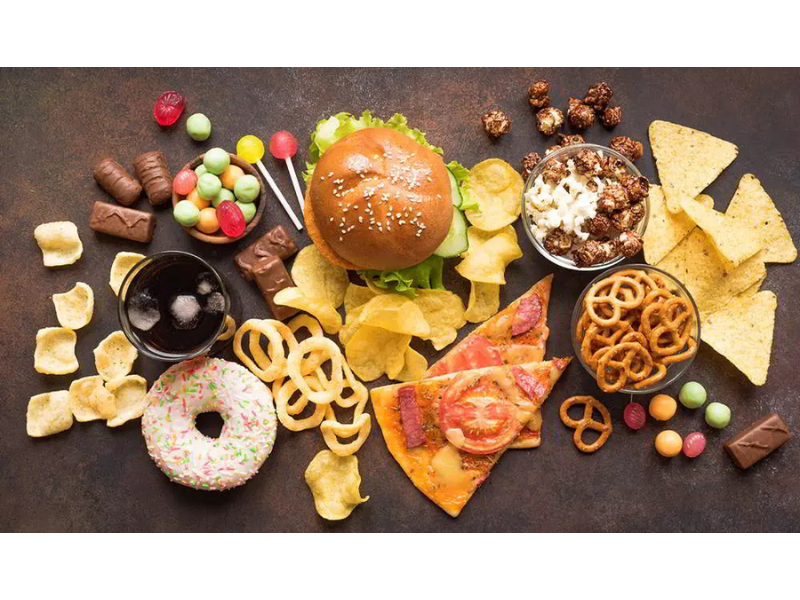2025.12.24
History of trans tat
Trans fat is a type of fat that exists in two forms: natural, in small amounts, and industrial, which is the predominant form. The natural type is found in some foods such as red meat, animal fats, and dairy products, produced by certain stomach bacteria in ruminants. However, industrial trans fat is produced through a process of hydrogenation, by adding hydrogen to liquid vegetable oils, resulting in solid or semi-solid oils. Normally, fatty acids are in the cis form, meaning hydrogen atoms around the carbon double bond are on the same side. But in trans fat, these atoms are placed opposite or facing each other. This change in molecular structure is why this type of fat is named trans.
From the early 20th century, with the discovery of the hydrogenation method that allowed for the production of oils with longer shelf life, industrial trans fats replaced saturated fats (solid at room temperature) such as those found in animal tissues, dairy, etc., due to their lower price (cheaper production process, easy access to raw materials, etc.). This was particularly important in the production of vegetable margarine, which was considered a cheaper alternative to butter. Paul Sabatier, a French scientist, studied the hydrogenation process to create fats like margarine. He was the first to describe the method for producing fats known today as trans fats.
The term "trans fat" was introduced by Wilhelm Normann, a German chemist who showed that liquid oils could be hydrogenated to change some properties. He patented the hydrogenation method in 1902. Then, in 1910, Frederick Harford in the United States established the Harford company, which produced solid fats. From the 1920s, food industry factories, especially in bread and cake production, gradually turned to the use of hydrogenated oils (mainly solid or semi-solid oils).
This continued until the 1960s, and hydrogenated vegetable fats became increasingly more popular than saturated fats. In the 1990s, with further research on the harmful effects of trans fats on health (such as increased risk of cardiovascular diseases), concerns about this type of fat increased. In 2006, the U.S. Food and Drug Administration (FDA) required manufacturers to list the amount of trans fats on food labels. In 2015, the FDA announced that trans fats are generally not recognized as safe in food products and gradually began to ban their use. In 2018, the use of trans fats was completely banned in the United States. Today, many countries are trying to reduce or completely eliminate the consumption of trans fats from their food products.
Some foods containing trans fats
Industrial trans fats are mainly found in solid and semi-solid vegetable oils, pastry oils, margarine, ultra-processed foods such as industrial biscuits and cookies, industrial and ready-made cakes and pastries, chips, puffs, canned foods like soup, processed breads like industrial lavash bread, hamburger buns, toast, baguette, fried foods like donuts, pastries, french fries, etc., and other foods cooked or fried with hydrogenated oils.
Some common reasons for using oils containing trans fats in the food industry
The use of oils containing trans fats, such as solid and semi-solid vegetable oils, margarine, etc., in the preparation and processing of food products can lead to the presence of certain amounts of trans fatty acids in the final product. Considering the risks of trans fats to consumer health, some common reasons for their use in the food industry include the following:
- Increased shelf life of food products: trans fats are more resistant to oxidation (combining with oxygen and altering the product), which increases the lifespan of food products.
- Improved texture and flavor of food: due to certain physical properties (such as their solid nature at room temperature), trans fats give a crispy texture and desirable flavor to food products. For example, these characteristics are very important in the production of biscuits, cakes, and other industrial baked goods.
- Low production cost: producing oils containing trans fats is less expensive compared to expensive animal fats or butter.
- Stability at high temperatures: oils containing trans fats have greater stability at high temperatures and a higher smoke point. This characteristic makes them more suitable for high-heat cooking processes such as deep frying."
Trans fat risks
The specific chemical structure of trans fats, resulting from the spatial arrangement of hydrogen atoms around the carbon double bond and creating a linear structure, leads to their greater rigidity and slows down their breakdown by the body's enzymes (such as lipase). This difficult metabolism may lead to the accumulation of trans fatty acids in the liver and increase the likelihood of liver disorders. In addition to, trans fats are associated with increased levels of bad cholesterol (LDL) and decreased levels of good cholesterol (HDL) in the blood. These changes can lead to fat deposits in blood vessels, resulting in their narrowing and blockage, which may increase the risk of heart disease and stroke. Additionally, trans fats may be associated with diseases such as type 2 diabetes, some types of cancer, brain diseases like brain inflammation and Alzheimer's (forgetfulness), mental disorders like depression, etc.
Global mortality statistics with trans fat
The World Health Organization (WHO) recommends that the consumption of trans fats be limited and gradually eliminated. According to the latest statistics in 2024, more than 278,000 deaths annually worldwide are attributed to the consumption of industrial trans fats.
Managing trans fat consumption
1- To reduce consumption and manage trans fats in the diet, it is crucial to check food labels. If the label contains terms like trans fat or "hydrogenated oil," it is best to limit its consumption.
2- It is better to use liquid vegetable oils with low trans fat content, such as sunflower oil, canola oil, etc., or trans fat-free oils like refined olive oil, instead of solid and semi-solid oils containing trans fats.
3- By preparing homemade meals, you can have more control over the oils used.


